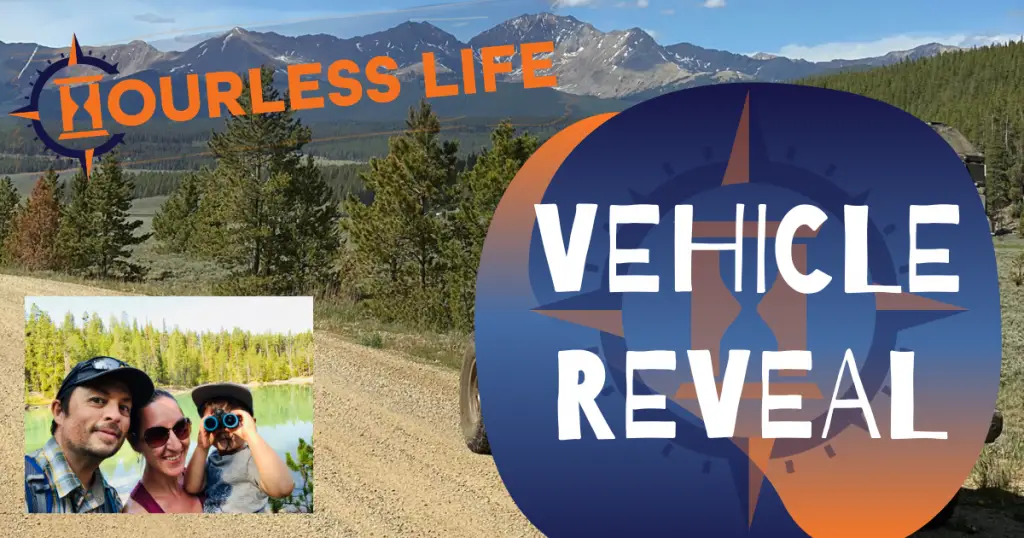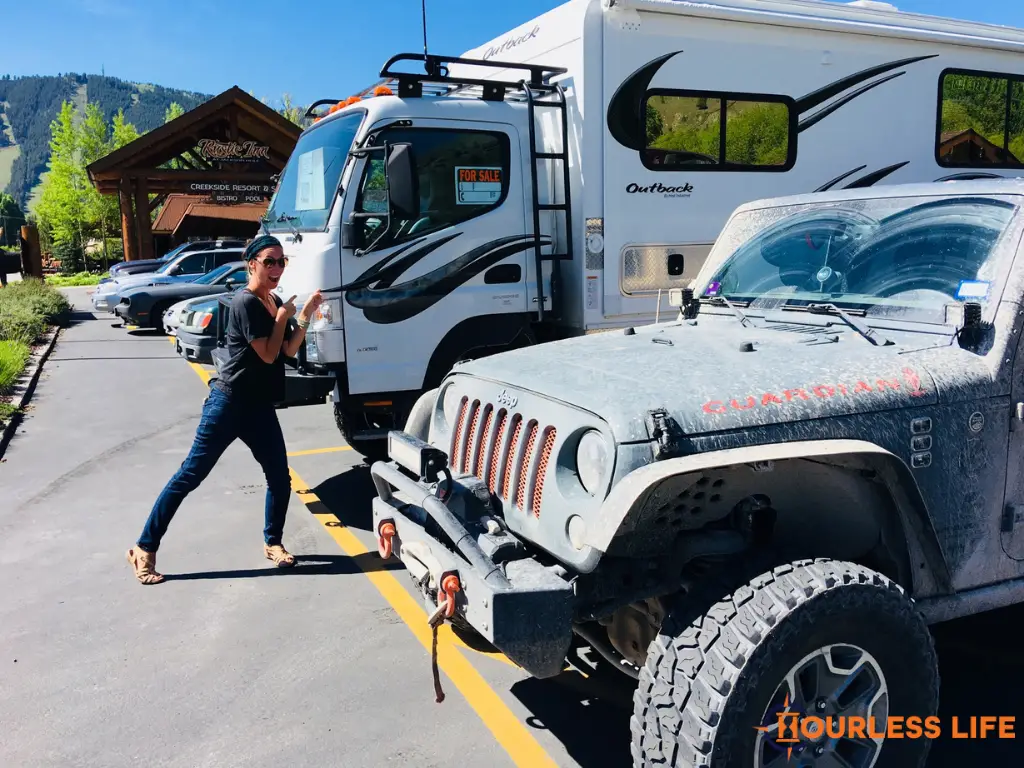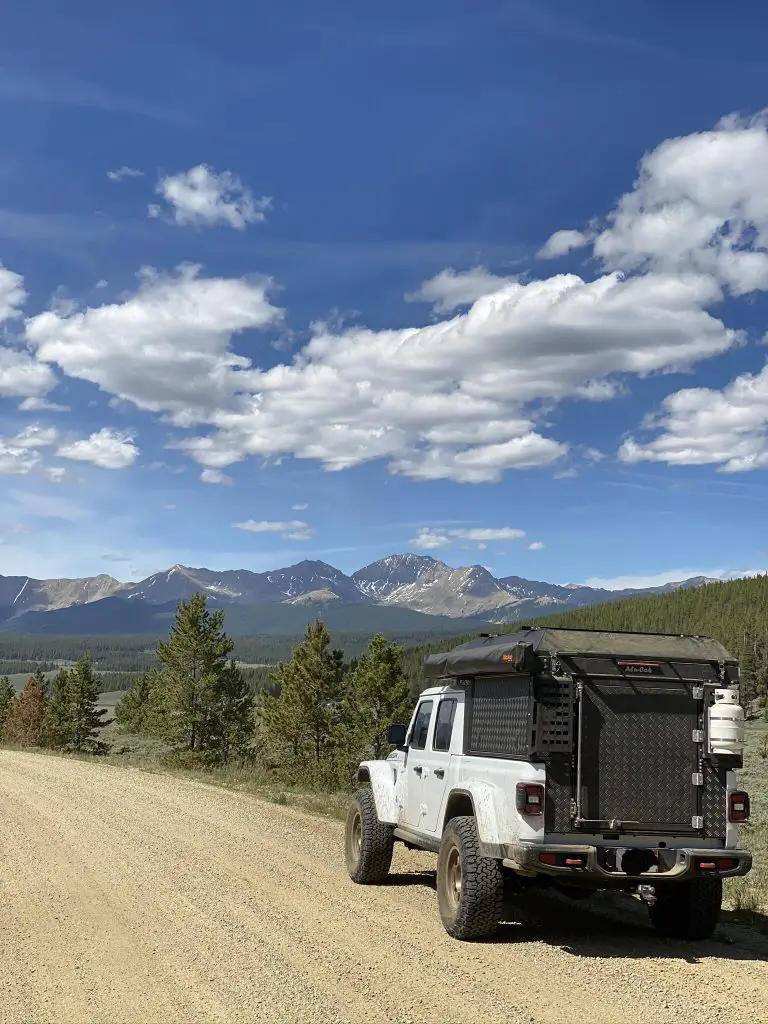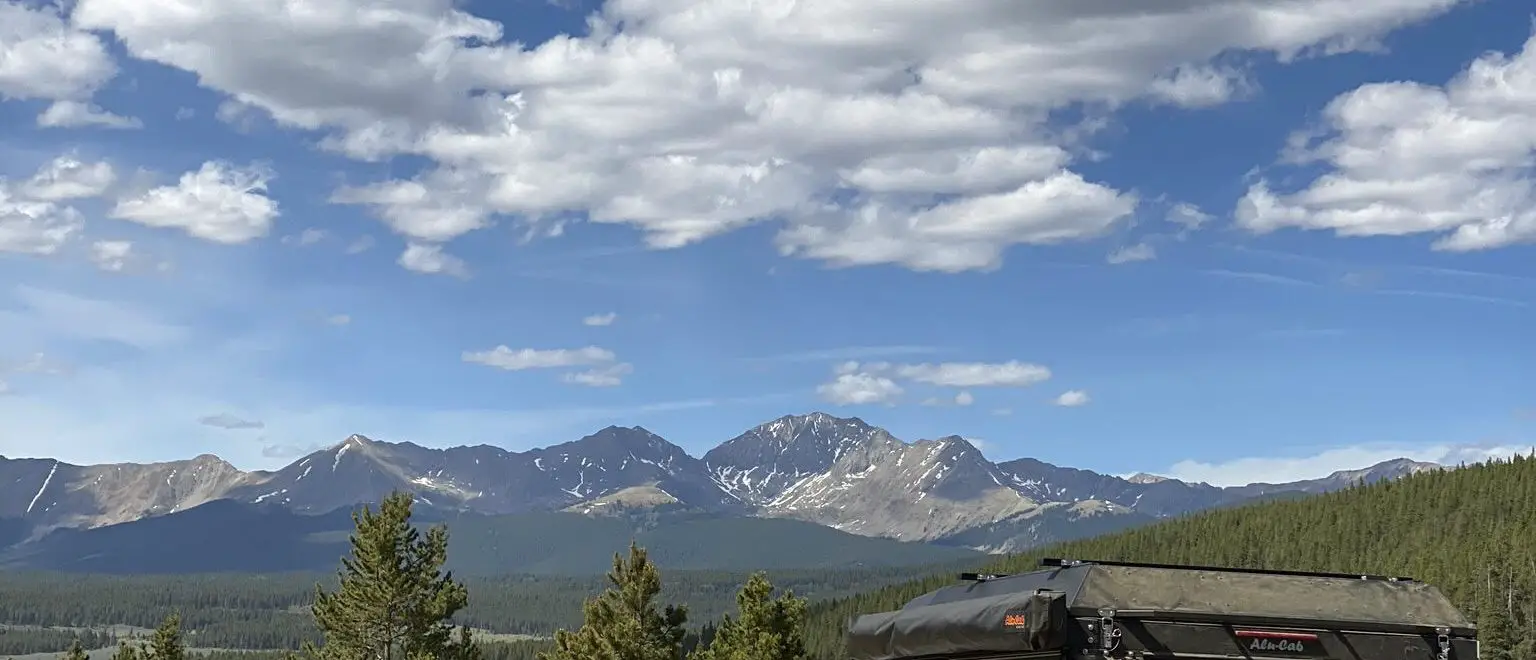
You’ve been asking for months and we’ve kept saying, It’s still a secret. We’ll announce soon! We need to work out a few details first.
So many details. Choosing a vehicle, a home, to drive around the world is an overwhelming task. You wouldn’t believe how many times we’ve gone back and forth between completely different options over the past two years, or how many times we had our minds totally made up before changing them again.
When I first hatched this plan to drive around the world in 2018, I thought I wanted a box truck. Last year, both Eric and I were convinced we were going to buy a Unimog and build out a box for the back where we could live.

But the more we talked about it and actually took multi-week overland trips into Mexico, the more we understood how we like to travel and what type of vehicle could fulfill those goals.
While we love the wilderness, we also love towns and cities. We watched a huge Iveco box truck attempt to drive into the center of Mulege, Baja. The couple realized they weren’t going to get far, and had to turn-off in a tiny alley so they could backtrack.
Not the end of the world. Doable if you’re committed. But that isn’t the style of travel we want. We want to be able to take our vehicle into populated areas without getting stuck or being unable to park, drawing unwanted attention in the process.
These are our big considerations:
- Size: we want to be able to park on small streets in colonial-era towns and we need to be able to fit into a container for ocean shipping.
- Sustainability: While staying small, we want to expand our inside living space. In our current build, a Jeep Wrangler with an iKamper Skycamp roof top tent, we’ve been restricted on where we can hang out when it’s raining or the weather is cold. Being comfortable is vital if we’re going to be happy along this multi-year journey.
- Off-road capability: We aren’t planning on doing any recreational rock-crawling with our new rig. But we want to be able to get where we want to go.
- Budget: we don’t want to take debt around the world with us. Our budget rules out fancy vehicles pre-customized for “overlanding.”
- Payload capacity: we’ve learned to listen to our vehicle and respect its payload capacity. Payload rules out so many vehicles that can’t accept the weight requirements of a full-time overlanding family.
- Serviceability: When we break a part, we need to be able to find a replacement on the other side of the world.
- Gas vs. diesel: The world is not ready to support an ultra-low sulfur diesel vehicle. That infrastructure is coming, but not yet. When we “decided” on a Unimog, we knew we’d need to buy one that predated ultra-low sulfur diesel, so that we could find fuel all over the world. But gasoline is even more universal than diesel. There are motorcycles in the remote reaches of the globe, and motorcycles run on gasoline.
No vehicle can do it all. The beauty of the big box truck is its fuel, water, and waste capacity. You can go off-grid for ages. With a smaller vehicle, you’re much more limited in range.
But these considerations have to be weighed. The right answer for one person won’t be the same for another. We’ve used the past two years of overlanding to get to know ourselves and what we need. Even so, we sometimes hold our breath and hope we’ve made the right choice.
Eventually, you just have to leap.
So here’s the vehicle that’s going to take us around the world

For our global overlanding rig, we’ve decided on the Jeep Gladiator Sport S with Max Tow Package, outfitted with the Alu-Cab Canopy Camper.
There! We’ve said it! No take-backs!

Let’s quickly review how the Gladiator jives with our vehicle priorities:
- Size: While there are smaller vehicles than the Jeep Gladiator, there are few (no?) smaller options with better payload and off-road capability.
- Sustainability: The Alu-Cab Canopy Camper will give us a tad more indoor living space. While we still plan to cook outdoors, there will be space inside where we can hang out, learn, and work, without actually having to be in bed.
- Off-road capability: The Gladiator Sport S with Max Tow Package has significantly more payload capacity than the Rubicon, which is why it’s our choice for an overlanding build. We may miss some of the Rubicon capabilities we have with our Jeep Wrangler, but rarely. On the other hand, we need to carry our belongings all the time, so optimizing payload is the right choice.
- Budget: We think we’re in our sweet spot, as far as budget goes. We’ll be able to purchase a new Gladiator and Canopy Camper without going into debt, and then all we need to do is keep fabrication and gear costs down. We really want to have money in the bank at the end of this build. Emergencies can arise at any time and it’s good to have a contingency plan. It also makes sense to invest in actual travel experiences, and not just the vehicle that’s getting us there.
- Payload capacity: We’re taking payload more seriously than we ever have. A spreadsheet is tracking the weight of every part of our build, and we are serious about staying under payload capacity.
- Serviceability: There are other brands more universally known than Jeep, like Toyota and Mercedes. But there are also many that are less known. By limiting modifications and complicated systems, we’ll make it easier on the mechanics we meet. God knows we won’t be fixing our own vehicle.
- Gas vs. diesel: We feel good about going with a gas-powered model.
A big thank you to Scott Brady, Dan Grec, and Marc Terrien for going out of their way to research and answer our questions in pursuit of this decision.
Now you know
It’s a bit nerve-wracking to send this out into the world. Yes, we have been working out details over the past few months as we’ve kept this secret. But I think we’ve also been nervous to commit. Once you know (and once we place the vehicle order in a few weeks), it’s real. We’re doing this.
And while we’re sometimes treated as superhuman, we’re just normal people. Eric had extraordinary experiences during his 20 years in the United States Coast Guard, which engrained many character qualities that will come in handy, but he hasn’t attempted anything like this. Heck, when we met nearly two decades ago, he was a self-professed “steel and concrete guy.” He wouldn’t be caught dead in the wilderness.
And me? Well, I’m a bookworm who has led a fairly typical life. At least it seems that way to me. And yet, those “family vacations” I took in a minivan from the Gulf of Mexico to just south of the Arctic Circle, before the road was paved, was arguably overlanding. And my dad hitchhiked Europe in the 1960s, which should be instant cred somehow (good genes?).
The bottomline is, we’re just us. We aren’t wilderness warriors, mechanics, navigational geniuses, linguistic experts, or financially wealthy.
Oh yeah, and we have a three-year-old who’s along for the ride.
So whoever you are, and whatever you’re trying to do, there’s no place for excuses. It’s okay to be afraid. It’s okay to not know.
But you only get one shot around–and this is it.
Tell me, what is it you plan to do
Mary Oliver
with your one wild and precious life?



Leave a Reply